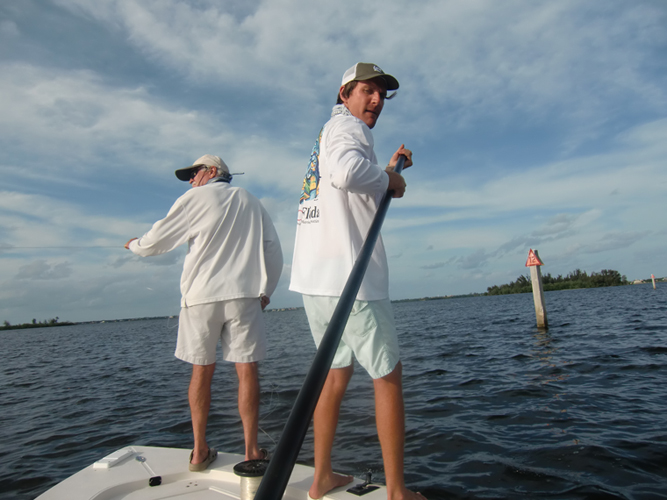
There are a lot of strange things about the county commission’s obsession with expanding the Oslo Road boat rap, but none stranger than the desire to spend $1.5 million in taxpayer funds for a project that will destroy sea grass beds in one of the only parts of our lagoon where seagrass still thrives, providing food for manatees and crucial habitat for immature game fish and other aquatic species.
The intention is so irrational and contrary to the commission’s frequently professed determination to protect and restore the lagoon that, not surprisingly, some commissioners deny the project will impact seagrass beds.
When concerned constituents write to Commissioner Peter O’Bryan – who has emerged as the most determined proponent of this anti-environmental boondoggle – he responds with a stock reply: “There will be no dredging of any sea grasses as part of the project. What the county is proposing to do is to remove the muck that has accumulated in the existing channel.”
Both statements are false.
Up until recently, the question of whether the dredging and subsequent increase in boat traffic would destroy seagrass has been an all-to-typical “he said, she said” political argument, with distinguished ecologists and biologists who have studied the area saying seagrass is present, while O’Bryan and other supporters of the project say this is little or no seagrass in the dredging area.
Then Lange Sykes, president of the Treasure Coast chapter of the Coastal Conservation Association, got the smart idea to settle the issue by filming an underwater video that shows lush seagrass and abundant fish in the dredge area.
Proof positive, right?
Not to O’Bryan. When I asked him about the video (which can be seen here: http://www.youtube.com/watch?v=JgvVWly5LI4), he said it wasn’t filmed in the channel, but in the seagrass beds adjacent to the channel. To prove his point, he said seagrass can’t grow in muck and since the channel is filled with muck, it follows there is no seagrass there.
In the video, Sykes emerges from the water periodically to show his bearing, before submerging to film more seagrass, and it looked to me like he was in the channel. To be sure, I called and asked him.
“Absolutely,” he said. “Ninety-nine percent of the footage in the video was filmed in the area that will be dredged.”
So it was back to “he said, she said” – except for one thing: The boat ramp dredge area is nearby and easily accessible. Anyone who wants to know the truth can go and look.
That is what I did last week, and guess what?
There is seagrass in the area that will be dredged and – here is the kicker – there is very little muck in the channel. Almost the entire area has a hard sand bottom perfect for underwater meadows.
Sykes and charter boat captain Brendan Burke took me to the site in Sykes’ boat, scooting down the lagoon from Memorial Island to Oslo on a mild Tuesday evening at high tide.
We measured the 210-foot proposed dredging distance from shore with a monofilament line, then poled back in, hanging over the side of the boat with googles and standing in the bow with polarized glasses to observe the bottom.
There is a bare area at the base of the ramp where boats are launched and retrieved but much of the rest of the bottom sports tufts of turtle grass and manatee grass. There was no visible muck or odor of muck as we poled in and out. The pole came up clean, and white sand was clearly visible.
I don’t know if O’Bryan is misinformed or disingenuous, or why the county is saying the channel is filled with muck when it is not, but I do know gouging 275 cubic yards of material from that area will damage seagrass beds the lagoon needs for its survival.



